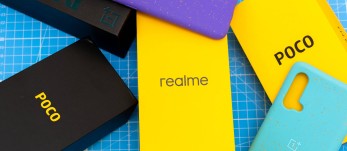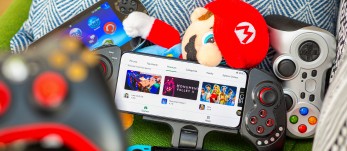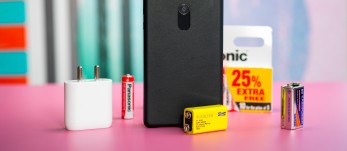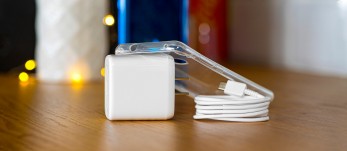Best camera phones 2025 - buyer’s guide
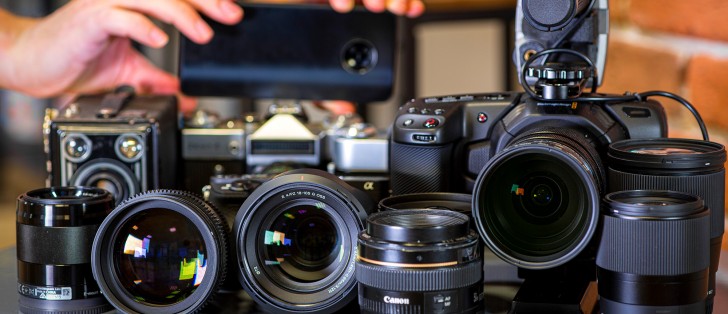
Last updated: February 23, 2025 (Changelog)
The best camera phones are usually the best phones overall, and you'll mostly find flagships in this category - the likes of the latest Galaxies and iPhones typically deliver the highest image quality of the time.
Google Pixels may have lost their edge in computational photography but we still have one to recommend if you're after that Pixel look. Xiaomi and Oppo have made great strides in the camera field too and often offer unusual hardware that delivers outstanding image quality. Finally, there's also a camera phone to get if you're on a budget - non-flagships can take nice pictures too.
Editors' choice
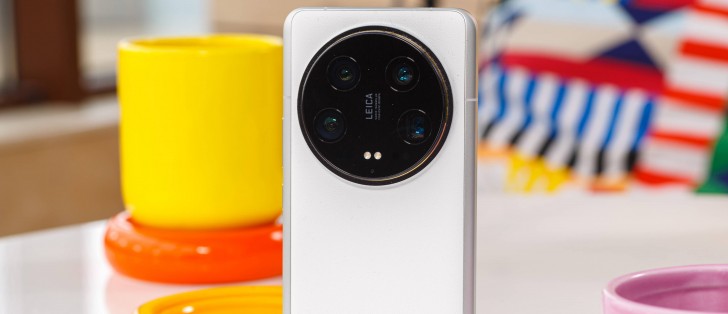
Xiaomi 14 Ultra
- Thoroughly great four-50MP camera system, flawless image quality
- Particularly great video recording
- Unique accessory package (if optional and not exactly cheap)
- Impressive Dolby Vision display
- Superb charging speed
- Top-class performance under sustained load It is finally a global phone
- Battery life is below average
- Selfie camera takes average quality stills, lacks AF
The Xiaomi 14 Ultra is still one of the best cameraphones in 2025, although this will soon change with the upcoming Xiaomi 15 Ultra. A favorite cameraphone in the office, the 13 Ultra didn't leave a lot to ask for, yet Xiaomi did find a few areas to touch up for the 14. Close-focusing telephotos have become the latest trend, and the two ones here are possibly the finest at that, but also excel at a distance. The variable aperture on the main camera is also welcome if you'd like that much control over DoF, though we don't see that as quite the transformational development.
An unrivaled selling point of the 14 Ultra is the Photography kit. Realizing its appeal and its potential to drive Ultra sales, Xiaomi has continued to develop the contraption and add features to it. Indeed, it adds further cost to an already expensive phone, but the two combined will get you as close to a 'real' camera as a smartphone can in ergonomics and experience.
The new Ultra is a global phone, finally! It is also a nearly perfect flagship, one that's so easy to love. Its unique design is beautiful and we do appreciate the ingress protection. Then there is one of the best displays in the industry - a 1440p LTPO OLED with 12-bit color depth, dynamic 120Hz refresh, and Dolby Vision support.
Then there is the most current Snapdragon 8 Gen 3 chipset with class-leading performance. The Xiaomi 14 Ultra also has excellent thermal handling and offers great sustained performance, We certainly cannot praise the battery life (it’s an average one), but we can praise the the charging speed. Kudos for including the 120W charger in the box, too, as this has become a rare thing lately. We also liked the speakers' loudness and quality.
In the end, the Xiaomi 14 Ultra is quite probably the finest camera with a phone attached to it that you can buy today.
Read full review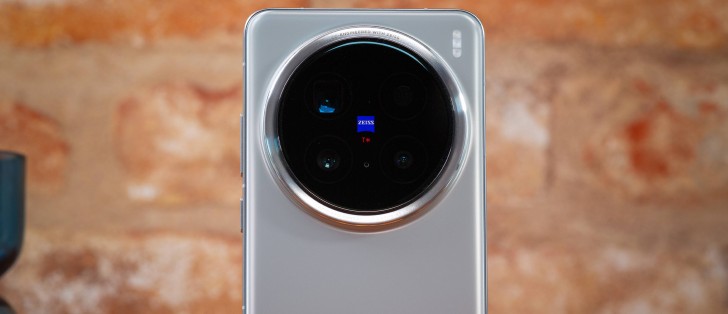
vivo X200 Pro
- Standout design, IP69
- One of the brightest displays we've tested, excellent overall
- Class-leading battery life
- Powerful chipset
- Excellent video stabilization
- Superb camera system, spectacular telephoto camera, particularly great at night and at close range
- Charging speed is only average
- So-so ultrawide camera, the selfies could have been better
Another installment in what's become one of our favorite lineups for camera greatness. The X200 Pro had big shoes to fill for us - it was meant to be the X100 Ultra we couldn't have in Western markets. For the most part, it delivers, but vivo does appear to have made sure to leave enough room to breathe for the next Ultra.
We admit it was the X100 Ultra camera setup we were after, only in a global firmware phone, and the new Pro doesn't quite get us there. The main camera is great, just not quite as great as we know they can make them, the ultrawide is average, and the selfie camera isn't Ultra-grade either.
But really, it was the X100 Ultra's telephoto that we've dubbed 'transformative' on more than one occasion, and the X200 Pro is bringing that to the world. Yes, we do like this camera. Immensely.
The X200 Pro brings a few other Ultra bits and the IP69 rating sounds like a nice bonus on top of the usual submersion-grade protection. The improved battery tech means the X200 Pro can last more than most without weighing more than them. The thoroughly excellent display is higher than most in the nits chart too, and the chipset is plenty powerful, if not quite Elite-grade.
All things considered, we're fine accepting the vivo X200 Pro's smallish imperfections, and we fully appreciate its virtues, of which it has plenty. And it easily passes as one of the greatest cameraphones right now.
Read full review
Apple iPhone 16 Pro Max
- 'Best iPhone ever'
- Four flagship cameras, LiDAR scanner
- Excellent photo quality, 24MP is an option
- Great video quality across the board, Dolby Vison capturing
- Excellent video stabilization
- Great selfies
- Robust build - Titanium frame, Ceramic Shield, IP68 and then some
- Large 120Hz Dolby Vision OLED, even if notched
- Top-notch battery life
- Class-leading speaker quality
- The GPU throttles down to 50% of its max performance under load
- No charger, no headphones in the box
- Not the fastest to charge
- Apple iOS is not for everyone
You do not get the most premium iPhone for a single feature. The iPhone 16 Pro Max is worth getting for its well-rounded user experience. But we also believe that the iPhone 16 Pro Max is among the best phones for photography on the go right now. It delivers superb photo and video quality across the board, its 2x zoomed prowess is great and it has some neat features like Dolby Vision and Cinematic video capturing, ProRAW, cool automation like auto portraits and auto night mode.
One of its options targets videographers and will go under the radar for the masses. We are talking about capturing 4K60 ProRes videos straight onto an external SSD drive or memory card, which might open use cases and workflows that have never been possible before.
Also, this is the best iPhone ever made. It has a stunning design, an outstanding display, great performance, impressive speakers, pro-grade cameras with a consistently good photo and class-leading video quality, long battery life and likable if weird iOS.
Overall, the iPhone 16 Pro Max is one of the most versatile and consistently good and reliable smartphones for still and video photography out there. It is a point and shoot device, but it also allows for professional capturing and massive prost processing potential.
Read full review
Samsung Galaxy S25 Ultra
- Camera system as versatile as ever
- Traditional Note form factor, still premium as ever
- Solid battery life, given the display size and battery capacity
- S Pen still provides a productivity boost
- Very pleasing and fluid One UI experience
- Not much has changed since the S24 Ultra
- Small capacity battery, not the latest tech, slow-ish charging
- Display is missing colors and Dolby Vision
- Photo experience in low light is suboptimal - in both behavior and end results
The Galaxy S25 Ultra is not the perfect smartphone, this year we have a long cons section, and for that, unfortunately, we no longer consider it as the ultimate smartphone. But it is the one of the most versatile cameraphones on the market right now and introduces an updated ultrawide camera.
The camera system is mostly a source of satisfaction. Last year’s reimagined telephoto setup is here to stay, and it offers a lot of versatility, quite unmatched right now. The main camera stays the same as last year, but the ultrawide comes with a new 50MP sensor, improved lens, and, of course, autofocus capabilities. Samsung has managed to squeeze out mostly great performance out of this setup, which is awesome.
The Galaxy S25 Ultra is certainly anything but a bad phone - quite the competent one, in fact. It manages to extract pretty great endurance (out of a small-ish battery), has a very good display (in most ways), charges reasonably fast (in the right context), has an improved build (but missing some extra sealing), and remains the only truly viable option on the market if you want a stylus (even though the stylus itself is a downgrade this year).
Yes, it is mostly the same as the S24 Ultra. And, yes, the S-Pen has been downgraded. And the battery life is worse. But In the end, Samsung's ultimate smart/camera/phone still comes easily recommended.
Read full reviewFor the Pros

Sony Xperia 1 VI
- Functional and comfortable design
- Energy-efficient 120Hz LTPO OLED, conventional aspect ratio
- A single, overhauled camera app for all use cases
- Unique pro-oriented photography features
- Extreme telemacro capability
- Exceptional battery life
- Great sounding speakers
- Great photo and video quality, top-notch stabilization
- Plenty of professional camera apps
- 3.5mm jack, microSD expansion, physical camera shutter key
- No charger and no cable in the box
- Charging speed is behind the curve
- Chipset's peak and sustained performance are lower than expected
- The telephoto camera's video performance leaves more to be desired
The Xperia 1 VI is the best Xperia yet. The standard aspect ratio, the lower resolution and the implementation of an LTPO OLED all play a big role in our assessment. The new display is probably the reason why the device got impeccable battery Active Use Score. We also liked the loud and nicely-tuned speakers, making this phone the ultimate multimedia device.
The cameras offer consistently great photo and video quality, with natural processing. And, of course, there are unmatched options for tuning if you know what you are doing. If you are a photography nerd, you will definitely appreciate the solid hardware at hand here coupled with excellent battery life and various Pro-oriented modes and settings for photos and, eventually, for videos.
It's not all great, though. The unremarkable video quality with the zoom camera, the uncompetitive charging speed and the underwhelming performance tuning of the Snapdragon 8 Gen 3 keep us from giving this phone an immediate reccomendation.
Read full reviewGoogle Pixel 9 Pro XL
- Refresh design with sturdier panels
- Brightest display we've tested
- Longest battery life on a Pixel, fastest charging too
- Versatile photo camera with very good quality overall, superb selfies
- Android from the source, 7 years of updates
- All the AI smarts you can think of
- Battery life is still behind the competition
- Camera hardware could use an upgrade - you can only do so much with AI
- Video quality not up to scratc
- The Tensor G4 chipset doesn't compare well in raw performance or stability under load
The Pixel 9 Pro XL brings relatively major stylistic changes plus some hardware upgrades that do make it a better phone than the previous generation. The brighter display is a welcome improvement, of course, and it's possibly the brightest in the business, though it's not like the 8 Pro was lacking in this respect. Battery life has been a blemish for Pixels in head-to-head comparisons, and the new model is a step up in this respect, though it remains in a trailing position among its peers.
The Pixel's biggest selling point lies in its AI capabilities, Google wants us to believe. A bunch of software features are at your disposal for both work and play and image editing tools can help save a photo that circumstances tried to ruin. Having a phone that's made by the OS maker has its benefits even if they're hard to quantify.
We're not quite as thrilled with the camera system as we would have hoped to be, though. The Pixel is lagging behind some of the trends and just because AI can enhance photos and even make up stuff that wasn't there, doesn't mean it can be used as a replacement for state of the art camera hardware. The brand new selfie camera is pretty great, the others fail to excite. This doesn’t mean the camera quality is not good, it’s just that we expected a bit more.
Of course, the Pixel 9 Pro XL is a well rounded and fully capable high-end smartphone - that's beyond debate. This generation prioritizes the phone's development as a vehicle for Google's AI pursuits - if you're into that and want to ride the AI wave, by all means go for it. There are also meaningful improvements on some of the fundamentals to appeal to the AI skeptics.
Read full review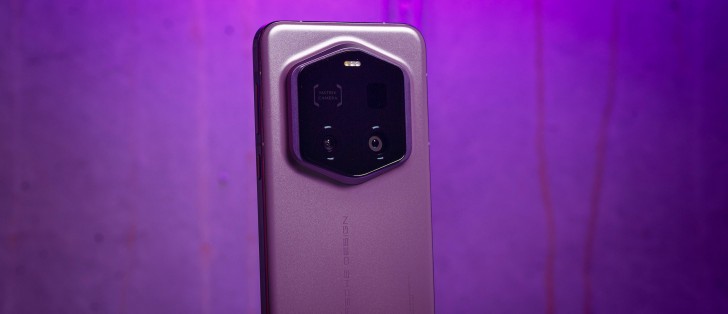
Honor Magic7 RSR Porsche Design
- Top-notch camera experience and quality
- Superb selfies
- Adequate video stabilization
- IP69-rated premium Porsche design
- High-end LTPO OLED with Dolby Vision
- Very fast charging
- 3D Face unlock
- Top-notch performance, including sustained performance
- Speakers are louder than most
- Wi-Fi 7; eSIM support, IR blaster
- Exclusive branding comes with a salty price tag
The Honor Magic7 RSR Porsche Design is great at everything important - screen, battery life, charging speed, speakers, performance, camera, and connectivity. It may not be as competitive as the industry darlings from Samsung and Apple, but if you value its premium market positioning and exclusive features, the Magic7 RSR is worth considering.
The Honor Magic7 Pro does a lot of things right - to the high standard you'd expect from a top-shelf model - and it also manages to stand out in a couple of ways worth mentioning. At least two of them can be found in the pill-shaped cutout in the display - the selfie camera and the 3D face scanning bits that you can't get on all that many Androids. The unusually loud speakers are also possibly a selling point.
The Magic7 Pro impresses with a large 6.8-inch LTPO OLED screen of high resolution, high dynamic refresh rate, 10-bit color depth, and support for HDR and Dolby Vision streaming. It is also powered by the Snapdragon 8 Elite chip for top-notch performance. All these goodies coupled with the awesome speakers make for one excellent multimedia device.
Honor's camera system is one of the best in the class yet, and it delivers loveable quality across the board, front and rear, day and night.
If you are looking for a proper flagship with top-notch camera kit and all-round feature set, the Magic7 Pro RSR Porsche Design must be an instant addition to your shortlist.
Read full review
Oppo Find X8 Pro
- Competent camera system overall, great zoom action, nice closeups, surprisingly good low-light video
- The camera button is useful
- IP69 rating - so you can pressure wash it, if you want
- Excellent battery life, particularly good at gaming
- Mediatek SoC at least as good as the latest Snapdragon, possibly even slightly better at prolonged GPU load
- Wi-Fi 7; eSIM support, Infrared port
- The display is behind the curve in terms of peak brightness
- Somewhat unreliable 6x camera performance in the dark
- No high framerate gaming possible
The Find X series have returned with a properly impressive flagship smartphone – the Find X8 Pro. It offers a refreshed design with improved ingress protection, a top-notch Dolby Vision display, superb performance, an impressive camera system, and a large battery with nicely fast charging.
The Find X8 Pro's flaws are few, smallish, and of somewhat lesser importance than the things it's actually great at. Just because Oppo is choosing to stay away from a brightness competition, doesn't mean you'll be strapped for nits, and unless you absolutely must game above 60fps, you'll be perfectly fine with a Find. The camera system has a few imperfections in our experience, but you can expect that from the Pro when there's an Ultra on the way.
Those relatively minor things aside, the Find X8 Pro is a thoroughly competent all-round flagship smartphone. The super powerful chipset is about as good as they come, the battery life is towards the top of the class, the newly-standard next-level water sealing brings extra peace of mind, the camera key can't hurt. And there's the top-tier camera system that struck us as better than most at low-light video, while also being great in general.
In fact, that camera system easily puts the Find X8 Pro as one of the best cameraphones nowadays – it has an excellent main camera with 2x hybrid zoom, two very real and very adequate telephoto cameras for 3x and 6x zoom, and one superb ultrawide camera with autofocus.
The Find X8 Pro is available now and even if it is not available on every shelf, it is worth going through the hassle of getting it.
Read full reviewMost affordable

Xiaomi 14T Pro
- Outstanding photo and video quality from all rear cameras, day and night
- Top-notch design, IP68-rated
- Superb OLED, 12-bit color depth, color accurate, 144Hz, Dolby Vision
- Very good battery life, incredibly fast charging
- Good Dolby Atmos speakers
- Flagship-grade performance and stability
- The selfie camera is disappointing
- A 3x optical zoom camera would have been better than 2x
The Xiaomi 14T Pro is still among the best cameraphones you can get for about €600. It delivers on every single promise and has plenty of flagship-grade, class-leading features. It's among the fastest charging phones in the industry and it's got a 144Hz display, and that's in addition to a high-end chipset and a camera system that only falls short in one or two niche areas.
The Leica cooperation is paying off, as all rear cameras (50MP main, 50MP 2.6x tele, 12MP UW) deliver outstanding photo and video quality day and night.
Admittedly, if selfies are of utmost importance, one of the niche areas becomes more of a pressing issue. Similarly, if you're into closeups, you'll probably need to look elsewhere (or try to work with the main camera, because the ultrawide and the telephoto won't be of much use).
Long story short - the Xiaomi 14T Pro is a very competent offering with a compelling set of flagship-grade capabilities.
Read full review
Motorola Edge 50 Pro
- Generally great photo quality from all cameras in all conditions
- Top-class selfies
- Light and compact body, grippy back, interesting color options; IP68 dust and water resistant
- Excellent display - bright, sharp, 144Hz
- Class-leading charging speed (with the 125W adapter), has wireless charging too
- Really nice software package - looks 'stock', has a ton of useful added features
- Generally great photo quality from all cameras in all conditions
- Video quality not quite up to scratch
- Bundled charger depends on memory version
- There are more powerful phones at that price
The Motorola Edge 50 Pro is another budget pick here for being the best cameraphone around the €500 mark. The Pro isn't the top model in the Motorola Edge lineup this time around, but it nicely slots somewhere below flagship territory. Even with the remarkably-specced Ultra, the Edge 50 Pro still manages to offer a very capable camera setup for stills - a champion at light gathering of a main camera is joined by a solid telephoto in a segment where dedicated zoom cameras are rare and an ultrawide that's got autofocus and puts it to good use. And then it tops it all off with some excellent selfies for good measure.
It doesn't quite tickle our fancy for video recording though, so it's worth keeping in mind that it's not quite the all-round cameraphone it could have been. Also somewhat annoying is the choice of chipset, which may be adequate for most things, but still doesn't look good next to similarly priced competitors in some markets.
The display is better than most in most metrics and it's also Pantone-validated - a first in the industry and a feat that's bound to attract crowds of buyers (or so thinks the marketing team). The back cover's color also comes from that company's catalog and it sure is nice, but we'd be equally happy with a generically named hue as long as it's that grippy and maintains the water-tightness - something that is still not universally found, even for Edge 50 Pro money.
Motorola says it's big on experiences and transcending the specs wars, which is convenient when the chipset isn't winning any. But the newly renamed Hello UI is a sizable chunk of the experience with an Edge 50 Pro and it's a nice blend of the visual simplicity of 'stock' Android and the personality and functionality that Motorola has built and continued to develop on top of it.
Overall, we do recommend the Motorola Edge 50 Pro as a cameraphone. Read full review
Most recent updates
February 23, 2025: Replaced the Galaxy S24 Ultra with the S25 Ultra, vivo X100 Pro with the X200 Pro. Added the Honor Magic7 RSR Porsche Design, Oppo Find X7 Pro. Removed the OnePlus 12, Realme 13 Pro+. Replaced the Xiaomi 13T Pro with the Xiaomi 14T Pro.
October 19, 2024: Replaced the iPhone 15 Pro Max with the iPhone 16 Pro Max.
August 25, 2024: Replaced the Sony Xperia 1 V with the Xperia 1 VI, the Google Pixel 8 Pro with the Pixel 9 Pro XL. Added the vivo X100 Pro, Motorola Edge 50 Pro and Realme 13 Pro+.
April 13, 2024: Replaced the Xiaomi 13T Pro with the Xiaomi 14 Ultra (new top). Replaced the Galaxy S23 Ultra with the S24 Ultra. Replaced the OnePlus Open with the OnePlus 12. Removed the Honor Magic5 Pro, Huawei P60 Pro and the Tecno Camon 20 Premier.
November 3, 2023: Replaced the iPhone 14 Pro Max with the iPhone 15 Pro Max, also new top. Replaced the Google Pixel 7 Pro with the Pixel 8 Pro. Added the Xiaomi 13T Pro and the OnePlus Open. Removed the Xiaomi 13 Ultra, Pixel 7, Xiaomi 12 Lite.
October 17, 2023: Added the Tecno Camon 20 Premier.
May 18, 2023: Added the Xiaomi 13 Ultra. Replaced the Sony Xperia 1 IV with the Sony Xperia 1 V. Replaced the Huawei Mate 50 Pro with the Huawei P60 Pro.
March 2023: Replaced the Galaxy S22 Ultra with the Galaxy S23 Ultra (new top). Replaced the Xiaomi 12S Ultra with Xiaomi 13 Pro. Replaced the vivo X80 Pro with the vivo X90 Pro. Replaced the Huawei P50 Pro with the Huawei Mate 50 Pro. Added Honor Magic5 Pro and vivo V27 Pro (as India Special). Removed the Xiaomi 12 Pro and Oppo Reno7.
November 10 2022: Added the Xiaomi 12 Lite as an affordable option.
November 1 2022: Replaced the iPhone 13 Pro Max with the iPhone 14 Pro Max. Replaced the Pixel 6 Po with the Pixel 7 Pro. Added Pixel 7 and Huawei P50 Pro. Removed the Oppo Find X5 Pro.
July 20, 2022: Added the Xiaomi 12S Ultra as a niche option.
June 29, 2022: Replaced the Galaxy S21 Ultra with the Galaxy S22 Ultra (new top). Replaced the Xiaomi Mi 11 Ultra with the Xiaomi 12 Pro. Replaced the vivo X70 Pro with the vivo X80 Pro. Added Oppo Find X5 Pro, Oppo Find X5 Lite/Reno 7 5G, Sony Xperia 1 IV. Removed the OnePlus 8 Pro, Zenfone 7 Pro, Realme 8 Pro, Pixel 5a 5G.
November 5, 2021: Added Google Pixel 6 Pro and vivo X70 Pro+. Removed the Oppo Find X3 Pro.
October 20, 2021: Replaced the Apple iPhone 12 Pro Max with the Apple iPhone 13 Pro Max. Replaced the Pixel 4a 5G with the Pixel 5a 5G.
May 10, 2021: Replaced the Samsung Galaxy S21 Ultra with the Mi 11 Ultra as our Editor's choice. Replaced the Realme 7 Pro with the 8 Pro. Removed the Huawei P30 Pro (now 2 years old and hard to find), the Mi Note 10 (old and hard to find), and Mi 10 Ultra (local to China and now replaced by the 11 Ultra).
Feb 16, 2021: Replaced the Samsung Galaxy Note20 Ultra with the Galaxy S21 Ultra as our Editor's choice.
Jan 05, 2021: Replaced the Realme 6 Pro with Realme 7 Pro.
Nov 27, 2020: Replaced the Samsung Galaxy S20 Ultra with the Galaxy Note20 Ultra as our Editor's choice. Replaced Apple iPhone 11 Pro with 12 Pro Max. Replaced OnePlus 7T Pro with OnePlus 8 Pro. Replaced the Pixel 4 XL with Pixel 4a 5G as the former is no longer on sale. Added the Zenfone 7 Pro, Xiaomi Mi 10 Ultra, and Huawei P40 Pro.
Best phones by category
Reader comments
- ZW
- 08 Apr 2025
- mZv
I was thinking the same. All other websites have to an iPhone, a galaxy and a pixel for the top 3 spots. No real effort at finding the BEST camera phone but GSMarena does an excellent job at true analysis
- alirezadhb
- 07 Apr 2025
- 5UU
why is xiaomi 15 ultra not on the list?
- AmigoX
- 24 Feb 2025
- 8$f
You are not updating your Photo quality comparison tool anymore right?





